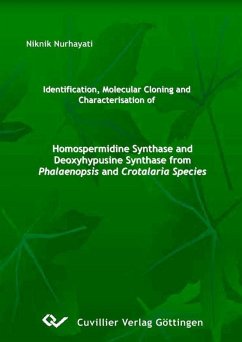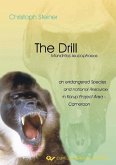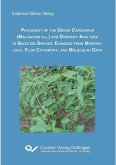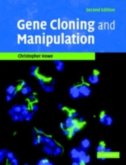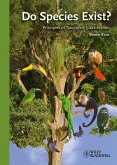DHS- and HSS-encoding cDNAs of Phalaenopsis have been successfully identified using a degenerate oligonucleotide primed PCR cloning strategy. Both enzymes showed different expression patterns. DHS are expressed in all investigated plant organs (root, leaf, stalk, flower and bud), whereas HSS is expressed specifically
in root tips and young flower buds.
At least three different intronless pseudogenes related to HSS were identified in cDNA pools prepared from Phalaenopsis stalk. One of them showed characteristics of processed pseudogene that can be recognized by the presence of poly A tail. These intronless pseudogenes have been proven to be transcribed. They assumed having arisen by retrotransposition.
Two different cDNA sequences, both code for active DHS (named DHS1 and DHS2) were identified from Crotalaria juncea. Despite of coding for the same enzyme, DHS1 and DHS2 showed different expression patterns as well as different levels of DHS/HSS activity. DHS2 exhibited a relatively high HSS activity but a low DHS activity, whereas DHS1 indicated a high DHS activity and a low HSS activity. DHS1 is expressed ubiquitously in all investigated plant organs (root, leaf, shoot tip, flower and bud), whereas DHS2 was only found in roots, leaves and shoot tips. Another remarkable different between DHS1 and DHS2 is that the later contains additional hydrophilic amino acids at its N-terminal region that is discussed to be a signal protein. A subcellular localisation study of DHS2 by means of a GFP reporter gene construct have excluded a role of this peptide as chloroplast targeting signal as it was predicted by computer aided cell sorting signal analysis.
Dieser Download kann aus rechtlichen Gründen nur mit Rechnungsadresse in A, B, BG, CY, CZ, D, DK, EW, E, FIN, F, GR, HR, H, IRL, I, LT, L, LR, M, NL, PL, P, R, S, SLO, SK ausgeliefert werden.

